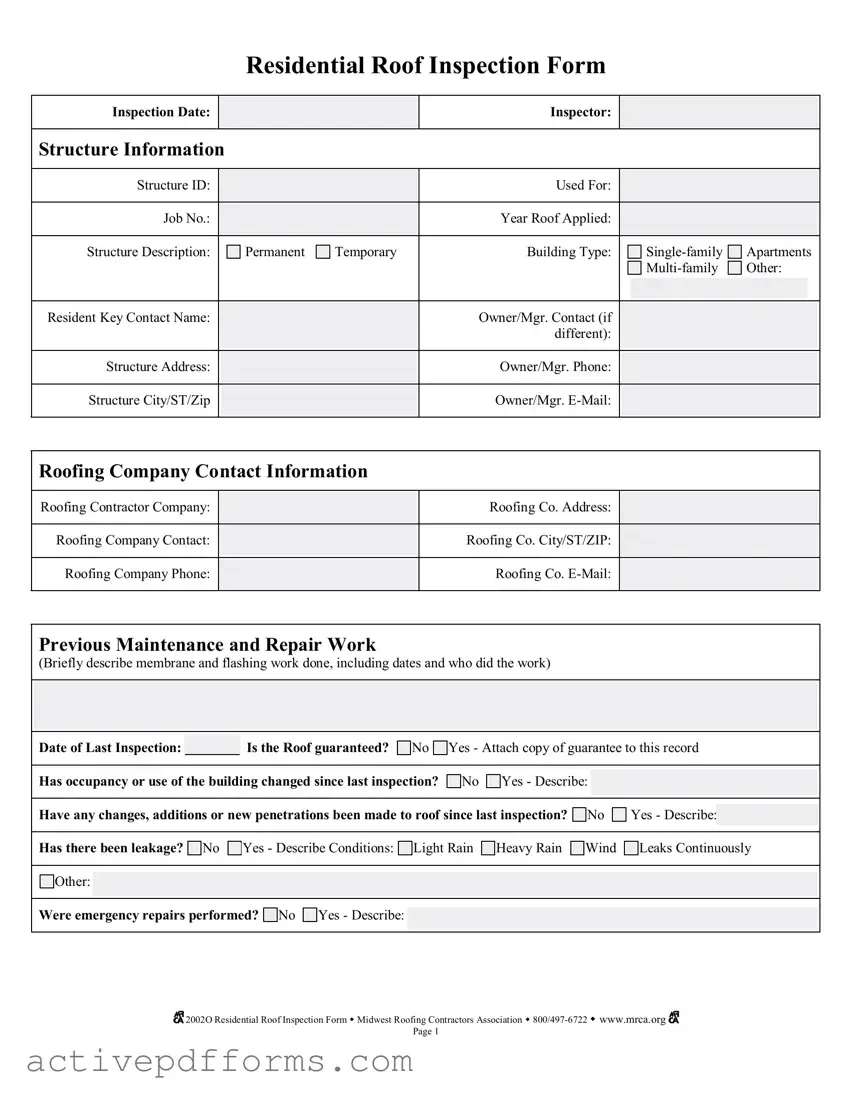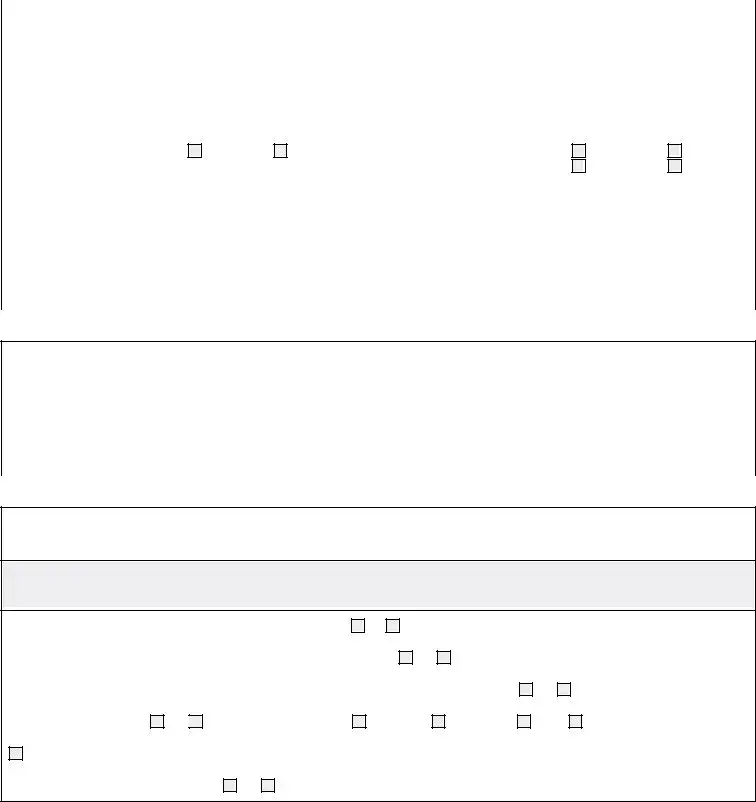A roof inspection is a critical procedure that plays an essential role in maintaining a building’s overall health and safety. This comprehensive process is encapsulated within the Residential Roof Inspection Form, a document designed to guide inspectors through evaluating various aspects of a roof's condition. From the inspection date to the detailed examination of internal and external structural elements, the form ensures nothing is overlooked. The form gathers essential data starting with basic information about the inspected structure, including its id, use, and the type of roofing material applied. It further delves into the building's specifics, such as the address, year the roof was applied, and contact information for the owner, manager, or roofing company responsible for maintenance. A notable section is dedicated to documenting previous maintenance and repair work, providing a valuable historical record of the roof's condition over time. Additionally, the form inquires about the roof’s warranty status, changes in building occupancy, or structural modifications that may affect the roof. The inspection details are meticulously categorized, assessing everything from the interior roof deck’s condition to the exterior walls, with a grading system that ranges from good, requiring no immediate action, to poor, demanding urgent intervention. This structured approach extends to evaluate the drainage systems, membrane integrity, and even miscellaneous issues like vandalism or vegetative growth. By integrating a photographic record, inspectors can offer a visual testament to the roof’s state, fostering a clearer understanding of any issues. Ultimately, the Residential Roof Inspection Form is a tool that ensures thorough and standardized roof evaluations, facilitating proactive maintenance and potentially saving property owners from costly future repairs.


 2002O Residential Roof Inspection Form w Midwest Roofing Contractors Association w
2002O Residential Roof Inspection Form w Midwest Roofing Contractors Association w 

 2002O Residential Roof Inspection Form w Midwest Roofing Contractors Association w
2002O Residential Roof Inspection Form w Midwest Roofing Contractors Association w 

 2002O Residential Roof Inspection Form w Midwest Roofing Contractors Association w
2002O Residential Roof Inspection Form w Midwest Roofing Contractors Association w 

 2002O Residential Roof Inspection Form w Midwest Roofing Contractors Association w
2002O Residential Roof Inspection Form w Midwest Roofing Contractors Association w 

 2002O Residential Roof Inspection Form w Midwest Roofing Contractors Association w
2002O Residential Roof Inspection Form w Midwest Roofing Contractors Association w 